The allure of 1920s Art Deco architecture lies in its ability to embody progress and modernity while adorning the ordinary and mass-produced. Spanning the two world wars, this architectural style represents both the highs and lows of its time - from lavish speakeasies during prohibition to the industrial remnants of recycled metal during the Great Depression. Let's explore the history and characteristics of Art Deco architecture in the 1920s.
The Birth of Art Deco-Style Architecture
The rise of art deco began in Paris from 1903 to 1904, with the construction of two apartment complexes by Auguste Perret and Henri Sauvage. These young architects introduced reinforced concrete to the Parisian residences, featuring simple lines, rectangular shapes, and a lack of facade adornment - a clear departure from Art Nouveau.
Reinforced concrete and steel art deco buildings began sprouting in capitals across the United States and Europe after World War I.
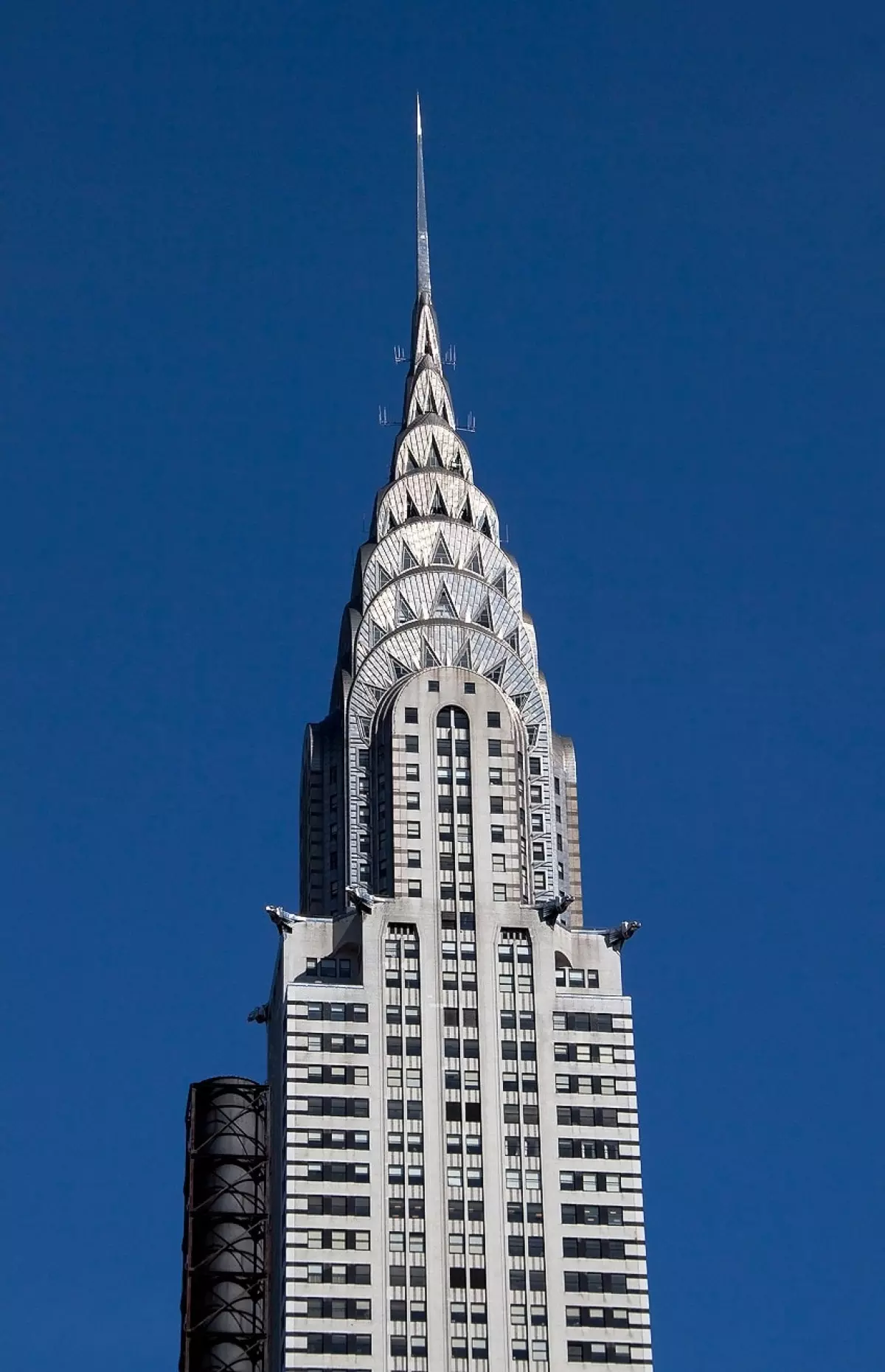 Close-up of the Chrysler Building in New York City, the quintessential Art Deco building; Tony Hisgett from Birmingham, UK, CC BY 2.0, via Wikimedia Commons
Close-up of the Chrysler Building in New York City, the quintessential Art Deco building; Tony Hisgett from Birmingham, UK, CC BY 2.0, via Wikimedia Commons
Art Deco design found its place in the United States, adorning office spaces, government facilities, theaters, and railway stations. It often blended with other architectural forms, such as the combination of Art Deco and Spanish mission architecture in the Los Angeles railway terminus or the ceiling inspired by the ancient Greek Mausoleum in Los Angeles City Hall.
Art Deco components were frequently used in engineering projects, such as the Golden Gate Bridge towers and the towers of the Hoover Dam.
The Art Deco aesthetic transcended land-based structures, making its mark on prominent buildings like Mexico City's Palace of Fine Arts and Tokyo's National Diet Building. Even ocean liners like the SS Normandie showcased Art Deco architecture, featuring Lalique glass in its dining room's roof and decor.
Cathedrals of Commerce
Government facilities, theaters, and office complexes became grand displays of American Art Deco interior style. Vibrant and bright, these interiors boasted sculptural artwork, murals, and intricate geometric designs made of glass, marble, ceramics, and stainless steel. Detroit's Fisher Building and the Guardian Building are two early examples of extravagant art deco lobbies.
The sculptural artwork on the walls depicted the attributes of industry and conservation, earning the Guardian Building the nickname "Cathedral of Commerce."
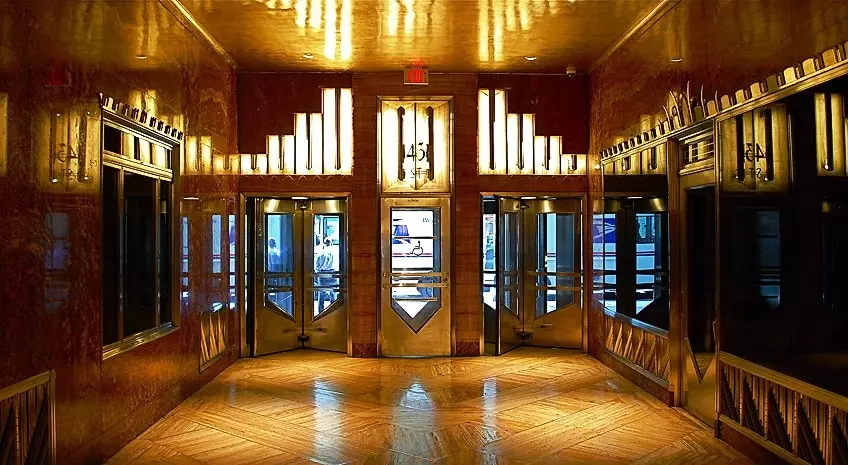 Interior of the lobby of the Chrysler building; Tony Hisgett from Birmingham, UK, CC BY 2.0, via Wikimedia Commons
Interior of the lobby of the Chrysler building; Tony Hisgett from Birmingham, UK, CC BY 2.0, via Wikimedia Commons
San Francisco's Medical and Dental Building drew inspiration from Mayan architecture, featuring pyramid formations and stylized rows of hieroglyphs on its interior walls. The Palais de la Porte Dorée in France stands as the epitome of an Art Deco interior, with a geometric wood parquet floor, paintings showcasing the inhabitants of French colonies, and a harmonious arrangement that captures the essence of Art Deco.
Movie Palaces
Some of the most magnificent examples of Art Deco architecture can be found in cinemas from the 1920s and 1930s. As silent films transitioned into sound, movie studios built grand exhibition sites in major cities to accommodate the growing audiences. These movie palaces often blended exotic themes with Art Deco architecture.
The Egyptian Theater in Hollywood drew inspiration from Egyptian pyramids and tombs, while the Fox Theater in California added a tower to its Art Deco auditorium.
 Grauman’s Egyptian Theatre in Hollywood (Los Angeles), California (1922); Unknown authorUnknown author, Public domain, via Wikimedia Commons
Grauman’s Egyptian Theatre in Hollywood (Los Angeles), California (1922); Unknown authorUnknown author, Public domain, via Wikimedia Commons
Aluminum, glass, chrome, and leather were prominent materials used in the interior design of these theaters. The California Paramount Theater, for instance, featured a colorful ceramic facade, a four-story lobby, and dedicated Art Deco smoking rooms for both men and women. Similar grand palaces emerged across Europe.
Europe's largest cinema at the time was the Grand Rex in Paris, with its majestic tower, boasting 6,000 seats.
Streamline Moderne
In the late 1930s, a new variation of Art Deco called Streamline Moderne gained popularity. This style featured rounded edges, long flat lines, and a predominantly white color palette. Some buildings incorporated nautical features like handrails and portholes, reminiscent of ship design.
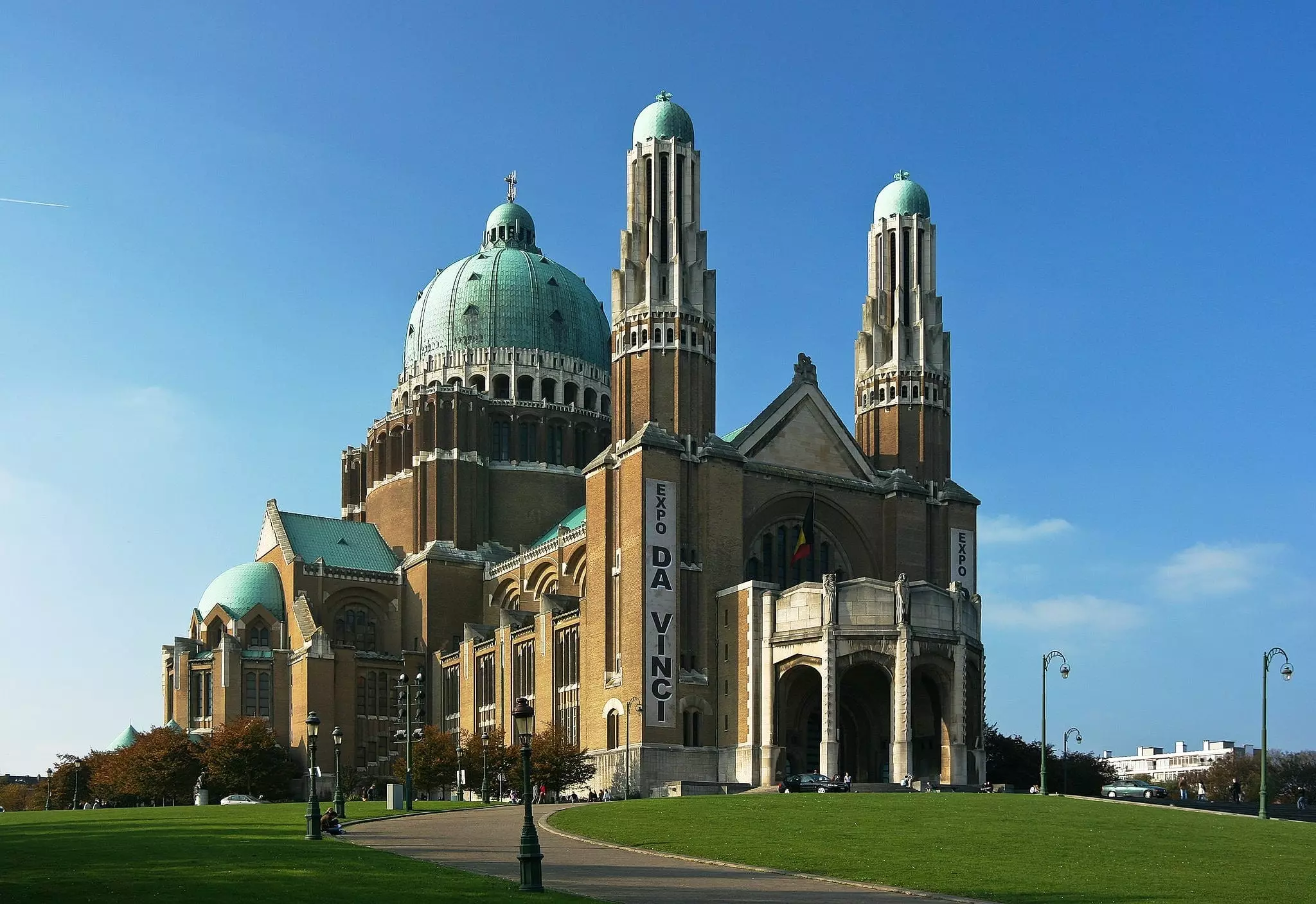 Pan-Pacific Auditorium in Los Angeles, California (1936); Marvin Rand, Historic American Buildings Survey, Public domain, via Wikimedia Commons
Pan-Pacific Auditorium in Los Angeles, California (1936); Marvin Rand, Historic American Buildings Survey, Public domain, via Wikimedia Commons
While this style was less common in office buildings, it found its place in bus terminals, airports, filling stations, and restaurants. Notably, diners inspired by streamlined train carriages were erected in New England communities during the late 1930s, some of which still stand today as historic sites.
Interior Decoration
During the Art Deco period, interior decoration underwent various transformations. After the fading of Art Nouveau, design forms returned to tradition. Inspirations came from sources like Fauvism and the colorful costumes and sets of the Ballets Russes between 1910 and 1920.
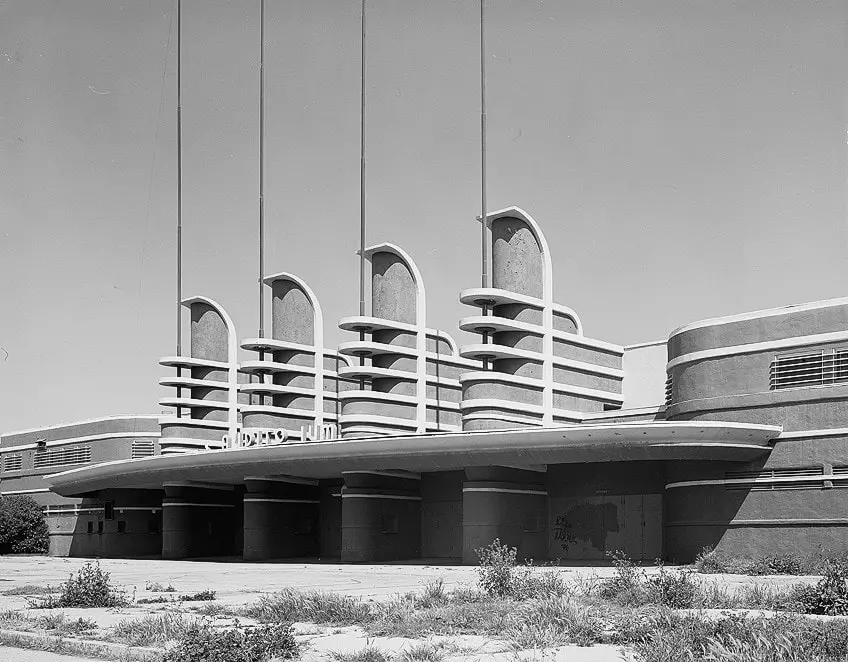 Detail of mosaic facade of Paramount Theatre (Oakland, California) (1931); Highsmith, Carol M., 1946-, photographer. Carol M. Highsmith’s America, Library of Congress, Prints and Photographs Division., CC0, via Wikimedia Commons
Detail of mosaic facade of Paramount Theatre (Oakland, California) (1931); Highsmith, Carol M., 1946-, photographer. Carol M. Highsmith’s America, Library of Congress, Prints and Photographs Division., CC0, via Wikimedia Commons
The pinnacle of Art Deco popularity was the 1925 Paris Exposition of Decorative Arts. As new materials and technology emerged, the ornamental style of Art Deco evolved, becoming more streamlined and less ornate. Furniture and architecture featured curved corners and a glossy, streamlined appearance, often influenced by the streamlined modern aesthetic. New materials like chrome-plated steel and aluminum began to appear in furniture and decor.
The themes of the decor represented the purpose of the building throughout the Art Deco period, particularly in the 1930s.
Sculptures depicted song, dance, and excitement in theaters, while power companies used sunrises as motifs. The Chrysler Building, for instance, showcased styled hood ornaments. WPA murals of the 1930s moved away from classical heroes and instead depicted everyday people like factory workers, postal employees, and farmers.
Famous Art Deco Buildings
Now that we've delved into the history and characteristics of Art Deco architecture, let's explore a few famous examples of this style:
National Basilica of the Sacred Heart (Ganshoren, Belgium)
- Date Completed: 1847
- Architect: Albert Van Huffel (1877 - 1935)
- Style: Art Deco
- Location: Ganshoren, Belgium
This Art Deco-style church was built to commemorate the 75th anniversary of Belgian independence, despite interruptions caused by the two World Wars. The structure, featuring a green copper dome, was completed in 1969.
 Basilica of the Sacred Heart in Brussels, Belgium; Markus Koljonen (Dilaudid), CC BY-SA 3.0, via Wikimedia Commons
Basilica of the Sacred Heart in Brussels, Belgium; Markus Koljonen (Dilaudid), CC BY-SA 3.0, via Wikimedia Commons
Majorelle Garden (Marrakech, Morocco)
- Date Completed: 1923
- Architect: Paul Sinoir
- Style: Art Deco
- Location: Marrakech, Morocco
The Majorelle Garden was created by Jacques Majorelle, a talented painter who fell in love with the colors and street life of Marrakech. The garden showcases vibrant cobalt blue, known as bleu Majorelle, which became an iconic color in the Art Deco aesthetic.
 The Majorelle Garden in Marrakech, Morocco; Viault, CC BY-SA 3.0, via Wikimedia Commons
The Majorelle Garden in Marrakech, Morocco; Viault, CC BY-SA 3.0, via Wikimedia Commons
Eastern Columbia Building (Los Angeles, USA)
- Date Completed: 1930
- Architect: Claud Beelman (1883 - 1963)
- Style: Art Deco
- Location: Los Angeles, USA
Coated in a lustrous turquoise terra cotta with gold and blue accents, the Eastern Columbia Building stands out with its vertical emphasis. Geometric patterns, sunburst designs, and plant and animal motifs adorn its facade, while the interior boasts a stunning two-story sunken entryway.
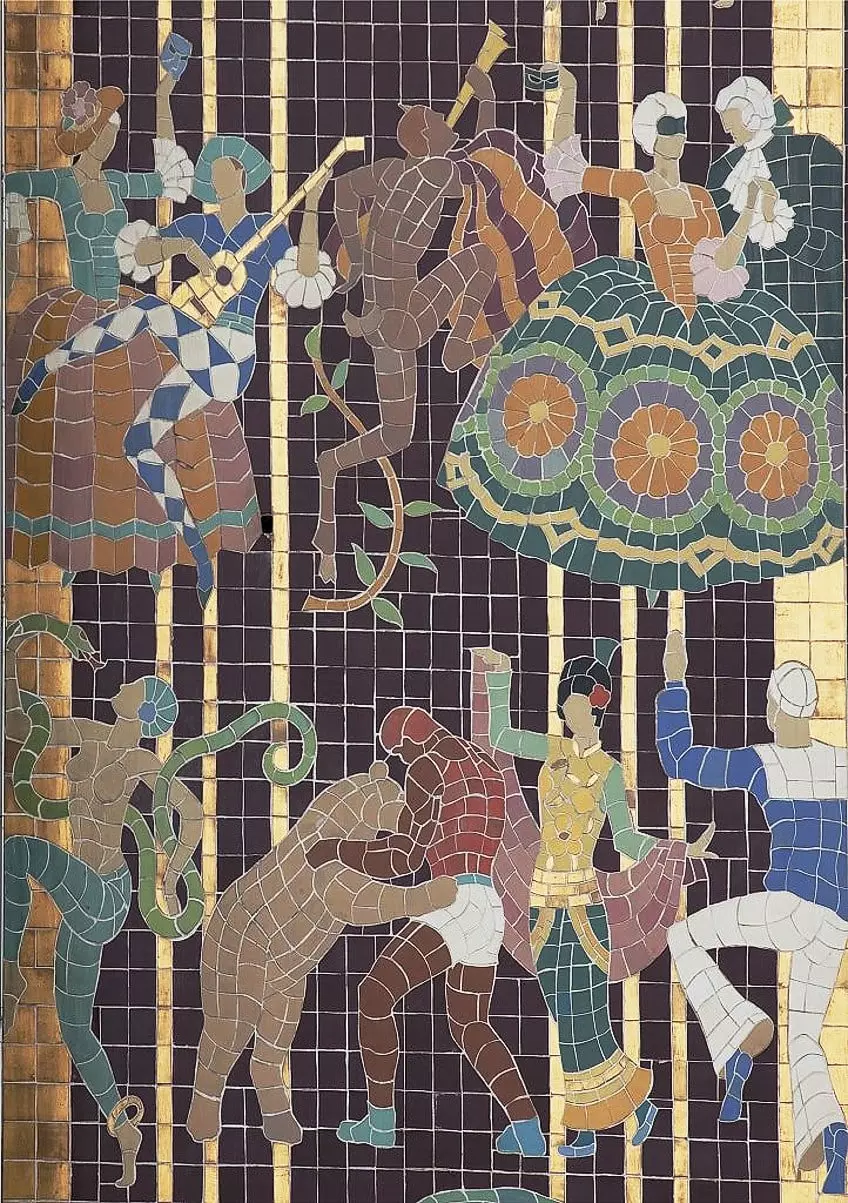 Eastern Columbia Building in Los Angeles, United States; Galkab, CC BY-SA 3.0, via Wikimedia Commons
Eastern Columbia Building in Los Angeles, United States; Galkab, CC BY-SA 3.0, via Wikimedia Commons
Paramount Theater (Oakland, USA)
- Date Completed: 1931
- Architect: Timothy L. Pflueger (1892 - 1946)
- Style: Art Deco
- Location: Oakland, USA
Originally built as a cinema palace, the Paramount Theater became a landmark in the motion picture industry. With its grand structure and exquisite Art Deco design, it remains an iconic example of the style.
 The Paramount Theatre in Oakland, United States; Jack Boucher, Public domain, via Wikimedia Commons
The Paramount Theatre in Oakland, United States; Jack Boucher, Public domain, via Wikimedia Commons
Fair Park (Dallas, USA)
- Date Completed: 1936
- Architect: George L. Dahl (1894 - 1987)
- Style: Art Deco
- Location: Dallas, USA
Designed by landscape architect George Kessler, Fair Park featured various Art Deco structures. The 1936 Texas Centennial Exposition marked a turning point for Fair Park, transforming it into an Art Deco showpiece. Many of the remaining structures have been aesthetically restored to their original Art Deco glory.
 Fair Park in Texas, United States; Photo: Andreas Praefcke, CC BY 3.0, via Wikimedia Commons
Fair Park in Texas, United States; Photo: Andreas Praefcke, CC BY 3.0, via Wikimedia Commons
Rockefeller Center (New York City, USA)
- Date Completed: 1939
- Architect: Raymond Hood (1881 - 1934)
- Style: Art Deco
- Location: New York, USA
Rockefeller Center, a renowned New York City landmark, showcases the fusion of Art Deco architecture and art. The center's Atlas statue and various Art Deco motifs make it a prominent example of the style.
 View from the northeast of 30 Rockefeller Plaza at the heart of the complex in New York City, United States; David Shankbone, Public domain, via Wikimedia Commons
View from the northeast of 30 Rockefeller Plaza at the heart of the complex in New York City, United States; David Shankbone, Public domain, via Wikimedia Commons
Art Deco emerged as a symbol of optimism and a fresh beginning after the turmoil of World War I. With its departure from extravagant and ornate aesthetics and its embrace of simplicity and modernity, Art Deco changed the architectural landscape and left an indelible mark on the world.
Frequently Asked Questions:
What Are the 1920s Art Deco Architecture Characteristics?
Art Deco architecture in the 1920s departed from elaborate religious and floral elements, embracing stylized forms and geometrical features. Chevron, sunburst, and zigzag patterns became synonymous with the Art Deco aesthetic. This new design approach gained popularity primarily in the United States.
Who Adopted Art Deco-Style Architecture?
Architects eagerly embraced this modern design approach during the economic and real estate boom of the early 20th century. The subtle sense of grandeur that Art Deco conveyed captivated architects, transforming metropolitan skylines worldwide. At the core of 1920s Art Deco architecture is the desire to depict progress and modernity while adorning the ordinary and mass-produced.









